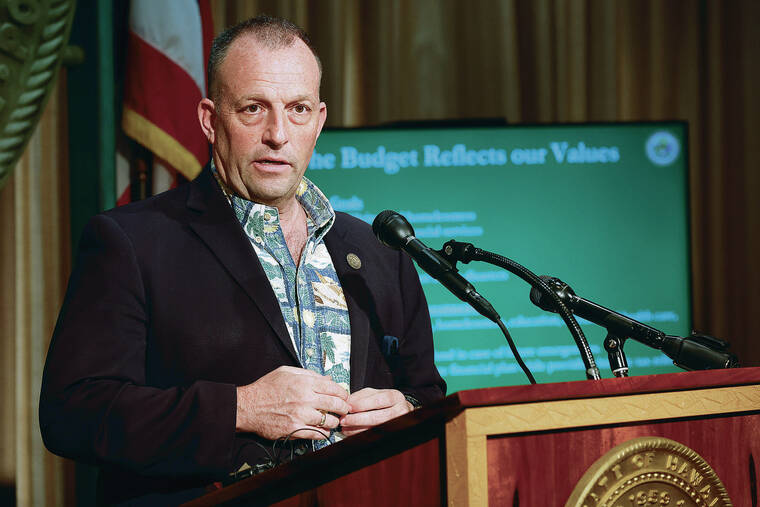Maybe Gov. Josh Green is stuck in a rut. Now midway through his first term as Hawaii’s governor, Green repeatedly brings up Hawaii’s bank account. He loves to focus on how much Hawaii has stashed away in the state’s rainy day fund.
I can see why Green feels a need to brag.
He’s now pegging it at $1.5 billion, a number he repeated in several news and public statements..
If you want to shift focus and look at a particularly soggy rainy day fund, then dial back to December of 2020. That was when former Gov. David Ige was announcing that the state finances had tumbled so much, Hawaii could not “sustain government as it exists.” It may be more than what you keep in the “let’s get a beer” fund, but when the former two-term governor looked at the state books, it wasn’t a pleasant read.
Compare Green’s easy economic decisions with the hard choices forced on Ige.
Four years ago, almost to the day, Ige was preparing a state budget that included plans for twice-a-month furloughs for 10,160 state workers while also warning that state worker layoffs might be necessary.
The news was not about disasters but it was “a fiscal crisis.”
Ige had ordered up plans for budget cuts of 10%, 15% or 20% to general fund spending in addition to furloughs.
The troubles showed up in a balance sheet that was concerning. Between fiscal years 2015 and 2016, total government spending in Hawaii increased by approximately $1 billion — from $12.9 billion in fiscal year 2015 to an estimated $13.8 billion in 2016. This represented a 7.5% increase, according to the National Association of State Budget Officers’ June 2017 State Expenditure Report.
When Ige left office, he presented the incoming Gov. Green with a clean, balanced budget.
“The state is in historically the best financial condition it’s ever been,” Ige said last week in an interview. “From where we were to where we are today, it’s like 180 degrees.”
Of course, Hawaii’s economy was helped not just by Ige’s fiscal conservative policies, but also by the $1.6 billion in direct federal aid during the pandemic.
“Spend it if you got it” has never been a wise government financing approach, and now new potential state debts loom.
As has been noted by Green in a Honolulu Star- Advertiser interview, the state needs $100 million to $200 million annually to adapt to climate change and protect it from ruinous fires.
Hawaii with its somewhat precarious tripod of economic props — military spending, tourism and a generally robust construction climate — have provided the state economic muscle.
Green hopes to increase public financing for housing projects and also add a slew of education grants. That’s all good, but if Hawaii built another leg to that economic tripod, turning it into a table or platform, it would be much more stable.
Richard Borreca writes on politics on Sundays. Reach him at 808onpolitics@gmail.com.

